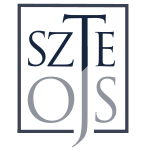Cognate maximization versus cognate minimization
in search of a "golden middle" for Altaic etymology
DOI:
https://doi.org/10.14232/sua.2022.56.277-292Keywords:
Altaic theory, distant language relationship, historical semantics, macro-comparative linguistics, onomasiological reconstructionAbstract
The paper presents a brief evaluation of the current state of affairs in the field of comparative Altaic linguistics, claiming that the relative lack of progress over the past 15 years is largely due to the conflicting opposing strategies of "cognate maximization" and "cognate minimization", respectively adopted by proponents and opponents of the hypothesis, neither of which is capable to adequately address the complexity of the issue. It is suggested that, in order to advance the Altaic hypothesis further, a "golden middle strategy" has to be worked out, and that one of the steps towards it could consist in embracing the methodology of onomasiological reconstruction, which, in addition to regularity of phonetic correspondences, places much more emphasis on the semantic and distributional properties of potential cognates and regards the etymological corpus as a systematic network rather than a collection of random individual comparanda. Although all the problematic issues and proposed solutions are discussed with examples from comparative Altaic data, they are equally relevant to most other hypotheses of long-distance relationship.



